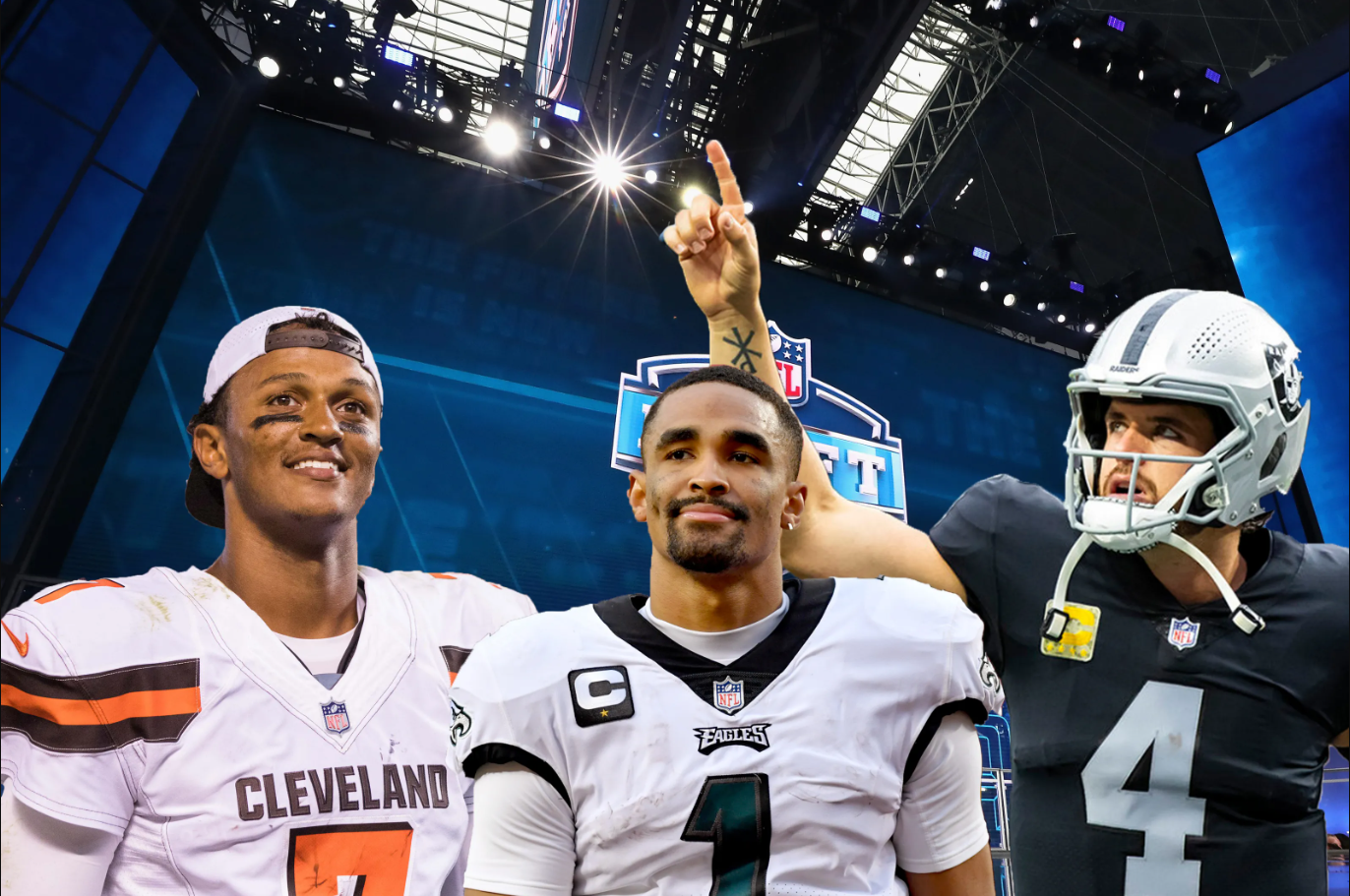The Myth of the Second Round Quarterback
After Kenny Pickett was drafted by the Steelers at 20, the next QB didn’t go until 54 picks later, even though there were several who analysts believed were capable of going in round two.
There’s just one small problem: second round quarterbacks don’t exist.
I know it sounds like an odd — or maybe blatantly false — statement, but there is a case to be made. The success rate on round two signal-callers is pretty horrendous, and it all seems to lead to this one conclusion.
In order to come to that conclusion, however, there are a variety of different criteria. First, the types of quarterbacks and draftable skills. Second, the structure, and third, the history of these picks. Those three, when looked at together, bring a pretty shocking revelation that made me conjure up that statement above.
Drafting a Quarterback
Teams who find themselves drafting quarterbacks highly may be in a variety of spots, but there are three that are the most typical:
- One of the league’s worst teams, holding a high draft pick.
- Middling franchise, looking to make a change.
- Top of the league, finding the protégé for an older (on the verge of retirement) leader.
When teams find themselves in any of these positions, they must find the traits they value in a quarterback. Among those are arm talent, rushing ability, composure, ability to read the field, and more. However, there are two categories that those fall into, which, for the sake of the argument are production and potential.
To put it simply, teams judge what a quarterback is right now versus what he could be in a few years.
Scenario One
The top guys usually have a combination of both. Trevor Lawrence, who went number one to the Jaguars last year, combined national championships and Heisman ballot appearances with a 6’6″ frame and a cannon of an arm. Thus, he went to a team that I would place in the first set of criteria. The Jaguars were easily one of the worst teams in the NFL, and thus received a generational talent.
Scenario Two
Those with one of the two traits, however, have a wide range of options. For a team that’s just good enough to be picking outside of the quarterback window, they might be willing to take a chance on a potentially huge swing in their franchises history. Kenny Pickett is a prime example of this. While he doesn’t have the strongest arm or the highest ceiling, his production last season was hard to ignore. The Pittsburgh Steelers, who were 9-7-1 last year, decided that he was worth it at 20.
Following that pick, there were other quarterbacks on the board, who, like Pickett, possessed one of the two main traits. Malik Willis, who some suspected may go as high as number two overall, had one of the highest ceilings in the draft, however, if he wasn’t going to go in the first, it seemed he wasn’t getting drafted until later on day 2.
The Steelers get their QB‼️
Kenny Pickett stays in Pittsburgh! #NFLDraft pic.twitter.com/Zah08UGadF
— SportsCenter (@SportsCenter) April 29, 2022
Scenario Three
Teams that fall in the third category (such as the Packers in 2020) have a tough decision. While they could take their chances on a high-potential pick like Jordan Love, it makes the most sense to maximize their championship window. Green Bay took that chance in 2020, and passed up elite talent because of it. Now, teams have learned from that mistake, while quarterbacks brunt the blow to their draft position.
Thus, Malik Willis, Matt Corral, Desmond Ridder, and all of the quarterbacks who many expected to go in round one, are now available in the dreaded first half of day two.
The Structure of the Second Round
On the typical draft boards, teams have a wide range of grades on prospects. It’s common to see someone who’s viewed as a top prospect by one team be a day two pick for someone else. Due to this disparity, many “first round talents” fall into the beginning of day two.
These players are quickly scooped up in what makes up roughly 25 percent of the round. This leaves the last 24 picks for guys truly viewed as round two prospects, which doesn’t leave much room for quarterbacks.
If a team would have believed in someone enough to draft them with those first eight picks, it’s unlikely he would have slipped to begin with. Teams rarely risk the opportunity of missing out their guy. This is why it’s common to see teams move up to 32. They guarantee themselves the player they want with an extra year of team control.
With the #32 overall pick in the 2018 #NFLDraft, the @Ravens select QB #LamarJackson (@Lj_era8)!
📺: NFLN/FOX/ESPN pic.twitter.com/iTxTT9dANE
— NFL (@NFL) April 27, 2018
If a team wasn’t willing to take that chance, it’s unlikely they viewed them very highly. That idea is exactly what makes the second round the worst for the quarterback. Would a team take a player who, at the most important position in the sport, they aren’t fully invested in or comfortable with — especially when there is still high-end talent on the board?
The Last 24
Once you find your way out of those first eight picks, it becomes time for teams to ask themselves that question. As this draft has shown, the answer has been a resounding “no.” The later picks, which are usually the teams competing for playoff spots, would rather choose someone who can contribute right away. Bubble teams are always looking for their next big acquisition, and their philosophy is that is can come then.
Quarterbacks, as a result, usually fall by the wayside. However, there are some instances where they are picked. The results of which are rather interesting.
Modern History of the Second Round Quarterback
Over the last 20 years, there have been 20 quarterbacks selected in the second round. 20 different times, teams have weighed the ideas of production and potential, and in the last two decades, have determined it’s time to take a quarterback who likely only had one of those traits.
This week's draft tweet:
If you have a 2nd-round grade on a QB, you are saying there is almost no chance of him amounting to anything in the NFL pic.twitter.com/xzgGJMHQnY
— Computer Cowboy (@benbbaldwin) April 11, 2022
Of those, the results are typically a failure of epic proportions. Kellen Clemens, Deshone Kizer, Drew Stanton, Chad Henne, Brian Brohm, John Beck, Jimmy Clausen, and Geno Smith all have more career interceptions than touchdowns, while Christian Hackenberg and Kyle Trask (who’s only in his second season) never played a recorded snap.
The other options aren’t great either. Tavaris Jackson, Brock Osweiler, and Kevin Kolb all showed some flashes, but never lived up to their selection.
Five of the remaining six are polarizing. Jalen Hurts has shown flashes, but fell apart in the playoffs. Drew Lock is still young, but was just traded by the Broncos and has been shaky. Jimmy Garoppolo was able to succeed in the Kyle Shanahan offense, but was just replaced and hasn’t shown an ability to transcend the system. Andy Dalton is a similar story, having rough stints in limited playoff appearances. Lastly, Colin Kaepernick led the 49ers to a Super Bowl appearance, but has been out of the league for the better half of the last decade.
This leaves Derek Carr, who, while having only one playoff appearance and zero playoff wins, has safely cemented a spot as the Raiders quarterback for eight years. He has made three Pro Bowls, and has continued to improve. Thus making him the only second round quarterback selected in the last 20 years who can safely be called a hit.
The Bottom Line on the Second Round Quarterback
The 2022 NFL Draft was a prime example of a philosophy at work. After a quarterback goes in the first round, teams have learned from mistakes of the past. Rather than picking signal callers with clear holes in their game in the following round, they’ve gone for contributors at other positions.
Several teams would love to have the next Derek Carr, but with that comes the chance of Brian Brohm or Deshone Kizer. Just like every other selection, the second round has it’s fair share of bust potential. However, it seems that the combination of quarterback traits, draft tendencies, and a simple history lesson will tell you that it simply isn’t the same.
General managers across the league will continue to take swings on quarterbacks, but when doing so, it’s important to look at the most glaring fact:
Second round quarterbacks don’t exist.
***This article was originally published on the ATB Network by Tyler DeSena***
Hussam Patel is a Miami Dolphins contributor and Lead NFL Draft analyst at Five Reasons Sports Network, Director of Scouting at PhinManiacs and Editor at Dolphins ATB. Follow him on Twitter at @HussamPatel
Use code “FIVE” to receive a matching $100 bonus on Prizepicks




Leave a Reply
Want to join the discussion?Feel free to contribute!